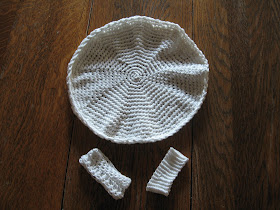Summertime and science are such a natural pairing. The weather is fine, children have extra time on their hands, and there's a entire world worth of discovery going on just outside the backdoor.
Don't worry if you're scientifically inept, or not a natural teacher, you don't have to pack the children off to an expensive summer science-theme camp (not that those aren't great, too) to squeeze in summer learning. All you really have to do is follow the seven steps below.
1. Send your children outside.
There are plenty of scientific discoveries to be made inside too, but save those for rainy days, or the winter months.
Parental common sense applies. Younger children should be supervised and older children should know not to eat unfamiliar plants, or try to handle unfamiliar bugs, or animals - think Kratt brothers' warning here.
2. Wait and see what they spot.
Whether it's a cool cloud formation...
...a rainbow in the sprinkler...
...or an unknown insect...
...children are naturally curious about the world around them. You can feed this curiosity right from the start by pointing out special "wonders" to your toddlers, or simply being interested, and listening when older children run back in to tell you what they've found.
3. Take a quick picture of said discovery.
Weather changes in an instant, and birds and bugs are quick to fly (or skitter) away. A couple of pictures (the clearer the better) can capture details that will help when it comes to identifying the discovery. Plus, seeing that you're interested enough to stop everything and snap a picture of their find, is another way to let children know you think their observations are interesting and important.
4. Look it up online.
Books are great, but you really can't beat the Internet when it comes to information at your
fingertips. It's not always perfect, and you won't always find what you're looking for on a first try, but you'd be amazed what you can hunt down if you just keep at it.
As children get old enough to handle Internet access safely, teach them how to search out information, too.
Start with wide, general searches - such as "round, green spider in our garden".
View images (with caution if little eyes are watching, too) to hone in on similar things.
Then, from there you can move to more specific searches, such as "
comb-footed spiders of North America"...
...or "
candy stripe spiders in Montana".
5. Don't be afraid to of the Latin.
The official scientific names for animals and plants can be intimidating. But, you don't have to read Latin to type the Latin name of an insect into a search engine. Using the scientific name will lead you to more scholarly sites, where the information is often more specific, and usually more accurate. Once you've searched out what your child has found specifically, you can go back to the common name, and search for a "kid page" for simpler information to pass on to your children.
6. Don't be afraid to make mistakes.
You won't always get it right. That's okay. Your children are going to learn something from the process, anyway.
If you realize you were wrong later, correct your mistake though. Children will be more likely to give research a try themselves, if they see it's okay to try and fail, try and fail.
7. Follow it up.
Once you've identified the bird, or tracked down the reason for the phenomenon your child has brought to your attention, follow-up with a trip to the library. Track down a few books about it, or an interesting video - Netflix, Amazon Instant Video, YouTube, or even the local video store is a great place to start.
Then, with books and videos in hand, consider working on a craft or themed-snack together, to really bring it all home.
That's optional, of course, but fun all the same. And really, that's what summer science should be all about.
























































